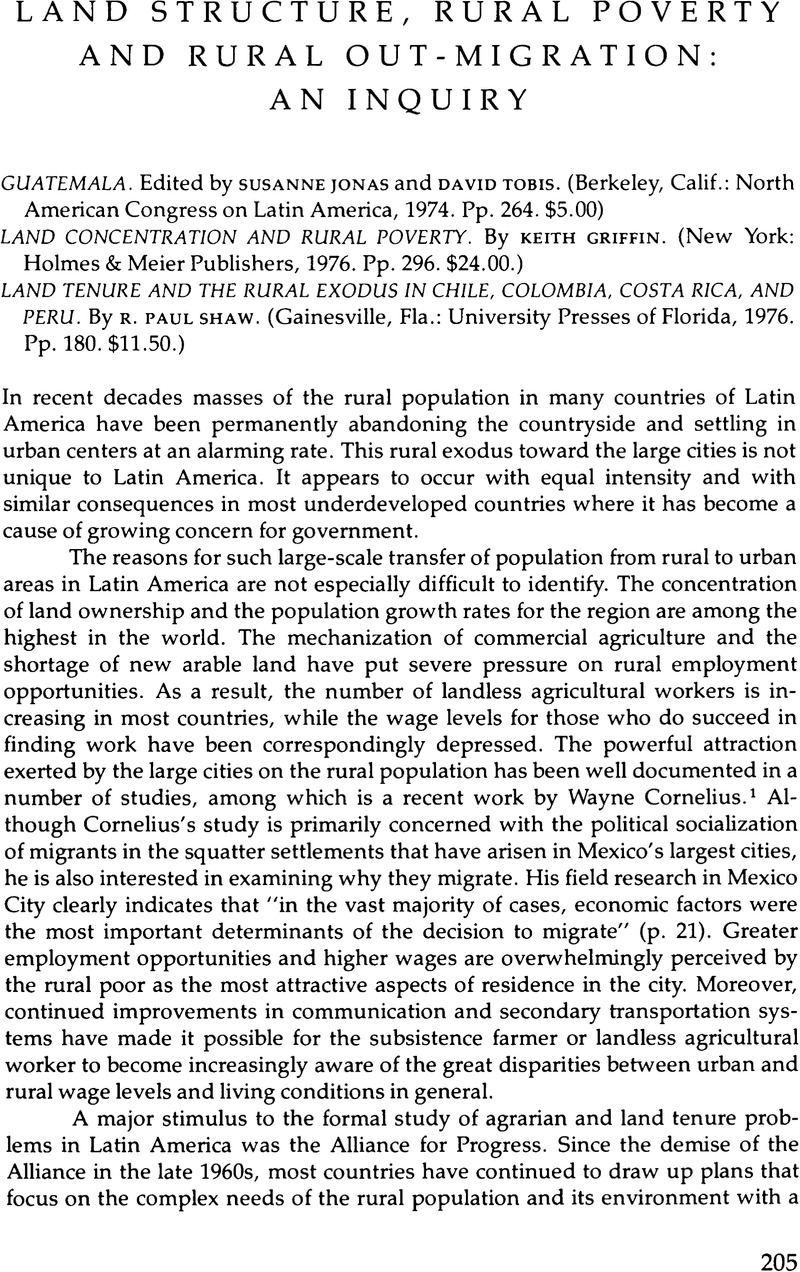No CrossRef data available.
Article contents
Land Structure, Rural Poverty and Rural Out-Migration: An Inquiry
Review products
Published online by Cambridge University Press: 24 October 2022
Abstract

- Type
- Books in Review
- Information
- Copyright
- Copyright © 1978 by the University of Texas Press
References
Notes
1. See, for example, the excellent studies by Jorge Balan, Harley L. Browning, and Elizabeth Jelin, Men in a Developing Society: Geographic and Social Mobility in Monterrey, Mexico (Austin: University of Texas Press, 1973), and Wayne A. Cornelius, Politics and the Migrant Poor in Mexico City (Stanford, Calif.: Stanford University Press, 1975).
2. The percentages are quoted from Lehman B. Fletcher, et al., Guatemala's Economic Development: The Role of Agriculture (Ames: The Iowa State University Press, 1970), p. 59.
3. This view is expressed in Wayne Cornelius's Introduction to Urbanization and Inequality: The Political Economy of Urban and Rural Development in Latin America, Wayne A. Cornelius and Felicity M. Trueblood, editors (Beverly Hills, Calif.: Sage Publications, 1976). Cornelius concludes that in view of the powerful forces promoting concentration and centralization in the development process, “governments must intervene massively in this process in such a way as to alter the deeply-rooted propensity of individuals and business enterprises to locate within the largest urban centers” (p. 21). The capacity to achieve such relocation of investment presumes a sophisticated level of economic analysis and planning, administrative coordination, and a measure of political support that most Latin American governments have found difficult to develop and sustain.




